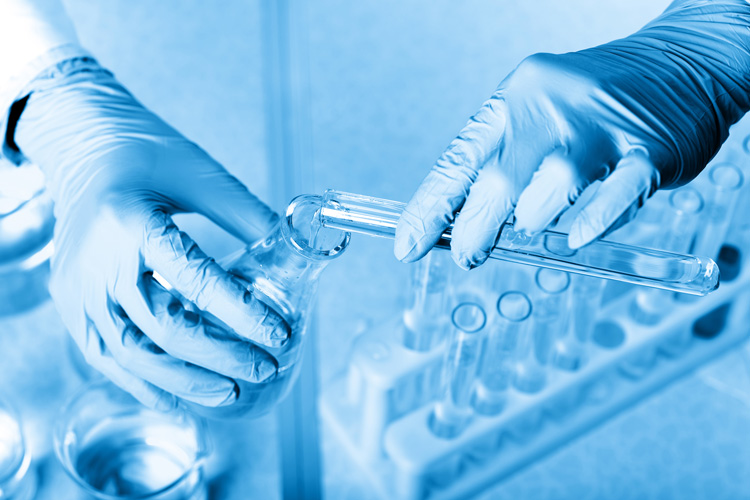+86-13961672821
+86-510-86268020
trust@hi2000.com
trust@hi2000.com
Room 807,No.169 Changjiang road,Huifu plaza,New centre,Jiangyin,Jiangsu China



Views: 0 Author: Site Editor Publish Time: 2024-09-19 Origin: Site









In the dyeing and finishing industry, the use of PDAC as a fixing agent has gained significant attention. PDAC, or Poly(Diallyl Dimethyl Ammonium Chloride), is a cationic polymer known for its excellent flocculation, decolorization, and adsorption properties. This article explores the application of PDAC in dye factories, emphasizing its role in improving dye fixation and reducing environmental impact.
Poly(diallyl dimethyl ammonium chloride) is a water-soluble cationic polymer widely used in various industrial and environmental applications. Its primary function is as a coagulant and flocculant in water and wastewater treatment processes. The polymer's strong positive charge allows it to effectively neutralize the negative charges on suspended particles and colloids, facilitating their aggregation into larger flocs that can be more easily removed through sedimentation or filtration. This property makes poly (diallyl dimethyl ammonium chloride) an essential component in the purification of drinking water, the treatment of industrial effluents, and the clarification of municipal wastewater.
Beyond its role in water treatment, poly (diallyl dimethyl ammonium chloride) is also utilized in the paper and pulp industry, where it enhances the retention of fine particles and improves the drainage of water from paper fibers, leading to better paper quality and production efficiency. Additionally, it finds applications in the textile industry as a dye-fixing agent, ensuring that dyes adhere more effectively to fabrics, thereby improving color fastness and reducing dye runoff. The polymer's versatility is further demonstrated in its use as an antistatic agent in various products and as a conditioning agent in personal care formulations, such as shampoos and conditioners, where it imparts a smooth and manageable feel to hair. The broad range of applications for poly(diallyl dimethyl ammonium chloride) underscores its importance as a multifunctional polymer in both industrial and consumer products.
Poly(diallyldimethylammonium chloride) (PDAC), also known as polyDADMAC, plays a significant role in the dyeing and finishing processes within the textile industry. As a cationic polymer, PDAC is highly effective in improving dye uptake and fixation on various types of fibers, particularly those that are naturally anionic, such as cotton and wool. By neutralizing the negative charges on the fiber surfaces, PDAC enhances the attraction between the dye molecules and the fibers, leading to more uniform and vibrant coloration. This not only improves the efficiency of the dyeing process but also reduces the amount of dye required, contributing to cost savings and environmental sustainability.
In the finishing stage, PDAC is used to impart various functional properties to textiles. For instance, it can act as an antistatic agent, reducing static cling and improving the handle and comfort of synthetic fabrics. Additionally, PDAC can enhance the fabric's resistance to water and stains by forming a protective layer on the fiber surfaces. This multifunctional polymer is also employed to improve the durability of flame retardant finishes and other specialty treatments, ensuring that the desired properties are retained even after multiple washes. The versatility and effectiveness of PDAC in both dyeing and finishing processes make it an invaluable additive in the textile industry, helping to produce high-quality, functional, and aesthetically pleasing fabrics.
The application of PDAC as a fixing agent in dye factories offers several benefits:
1. Enhanced dye fixation: PDAC improves the binding of dyes to the fabric, resulting in deeper and more uniform colors.
2. Reduced dye loss: By preventing the dyes from washing out, PDAC minimizes dye loss, which is beneficial for both cost savings and environmental protection.
3. Lower environmental impact: PDAC-treated fabrics require less water for rinsing, reducing the volume of wastewater and the amount of dye effluents.
4. Improved fabric quality: PDAC can help in reducing fabric fading and improving the overall durability of the dyed products.
PDAC proves to be a valuable addition to the dyeing and finishing processes in textile manufacturing. Its ability to enhance dye fixation, reduce environmental impact, and improve fabric quality makes it an essential component in modern dyeing technology. As the industry continues to evolve towards more sustainable practices, PDAC stands out as a promising solution for dye factories aiming to optimize their operations while minimizing their ecological footprint.